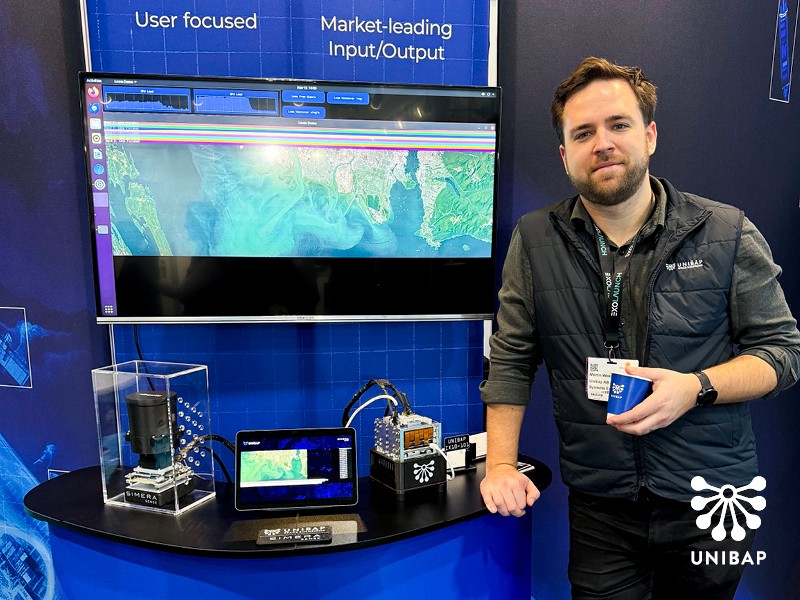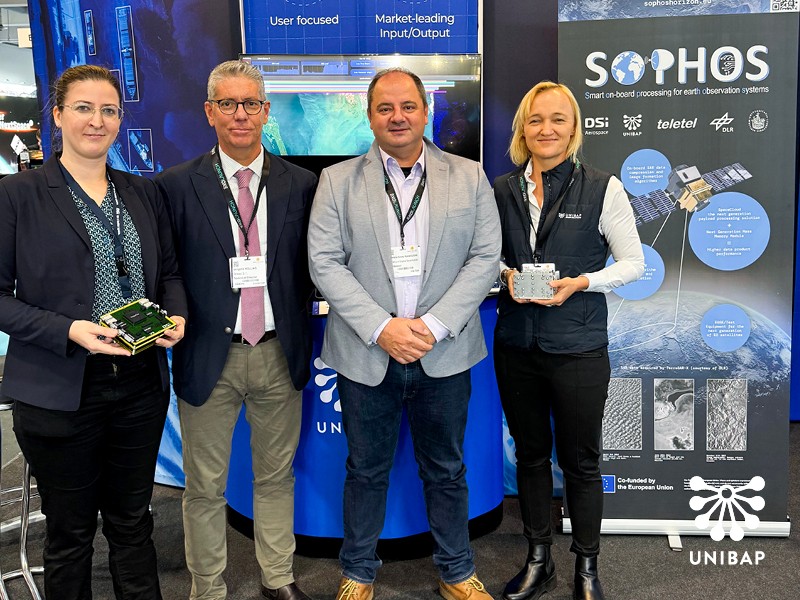Filed under:
News
Date:
05-12-2024
Filed under:
News
Date:
05-12-2024
The Space Tech Expo Europe 2024 in Bremen was bigger and more technically focused than ever before. Spanning four halls filled with exhibitors from across the space industry, the event was a haven for tech enthusiasts and industry professionals alike. I was pleased to see that Unibap’s space edge computer, the iX10, was one of the standout attractions, and captured significant interest from partners, customers, and prospects.
As a hardware engineer, I found the expo to be an absolute treasure trove of innovation and insights. Here are my key takeaways:
Companies like Simera Sense, Addvalue Innovation and CUBECOM®– offering cameras and communication systems, radios, and sensors for space applications – frequently expressed compatibility with the Unibap iX10 right out of the gate. The industry seems to prefer interfaces like UART for radios, SpaceWire for intermediately data heavy devices such as hyperspectral cameras. For the high performance and data heavy devices, ethernet was commonly preferred.
The iX10’s I/O versatility was noted as a must-have for running these devices, reinforcing its potential market relevance.
Not all, but some companies had mock-ups of their devices in their booths. This presented the opportunity to examine the choices of connectors for any given device. The MIL-standard Micro-D (MIL-DTL-83513) connectors was the most common choice, which is great for compatibility, as all of the connectors on the iX10 are Micro-D compliant. The Micro-D connector was closely followed by Harwin G125-series connectors. These were predominantly used by OBC-related hardware. Finally, some companies opted for nano-D connectors on their devices, which are great for connector density, but more of a headache to integrate with.

Unibap’s joint demo with Simera Sense was a great success. Martin Westman welcomed the visitors.
The expo also gave a chance to study emerging competition in the edge computing market segment. The general trend was devices that focus on either FPGA based solutions or NVIDIA GPUs, but Unibap’s concept of combining CPUs, GPUs and VPUs remains unique. Some competitors are also trying to enhance their software offer with, e.g., subscriptions-based AI algorithms, but mostly to remedy the complexity of FPGA programming. While some competitors might match or surpass Unibap’s products on some points like compute, size or power consumption, the iX10 remains unchallenged in properties like I/O and software support, and stands out for its universal compatibility and ease-of-use.
During the expo, there were a lot of opportunities to engaging with satellite integrators and prospective customers revealed several trends and future demands:

People from the SOPHOS project and the Greek government.
Sleek, modular designs were another highlight, with Space Inventors standing out for their hardware aesthetics. Radiation tolerance was a key concern, and Unibap’s qualification levels fit the current customer requirement. Still, reaching the good-enough mark of space qualification will be the key for emerging space technologies to earn the trust of the traditional space sector.
To me, Space Tech Expo 2024 underscored the growing demand for high-performance, radiation-tolerant computing in space. Unibap’s iX10 stood out as a versatile and in-demand solution, with plenty of opportunities to evolve and innovate in response to industry trends. Whether it’s expanding CPU capabilities, exploring AI accelerators, or embracing modularity and form-factor shifts, the road ahead is as challenging as it is exciting.
Best regards,
Martin Westman
Electronics & PCB Engineer, Unibap